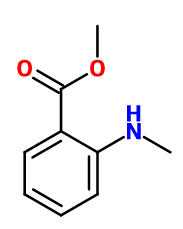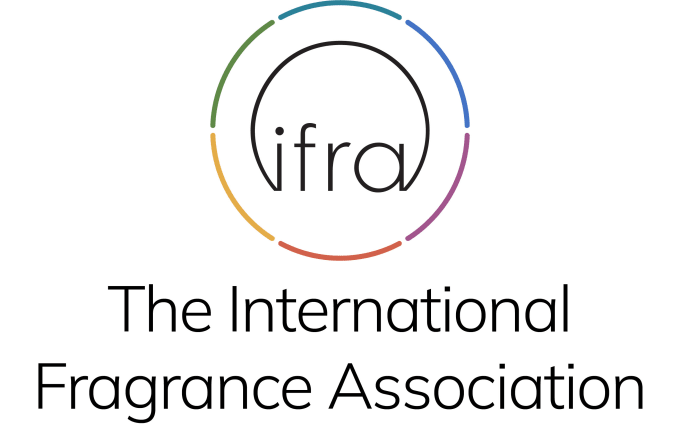
Photo credits: ScenTree SAS
Dimethyl anthranilate
Methyl 2-methylaminobenzoate ; Methyl 2-(methyl amino) benzoate ; Methyl 2-(methylamino) benzoate ; Methyl 2-amino-3-methylbenzoate ; Methyl 2-amino-3-methylbenzenecarboxylate ; Methyl 2-methylaminobenzoate ;Mmethyl 3-methylanthranilate ; Methyl methyl anthranilate ; Methyl methanthranilate ; Methyl anthranilate methyl ; Methyl N-methyl anthranilate ; Methyl N-methyl-2-aminobenzoate ; Methyl 2-methylaminobenzoate

Photo credits: ScenTree SAS
| Company | Ingredient Name | ID | Comments | Naturality | Certifications | Purity | Latin name | Treated part | Geographical origin | MOQ |
|---|---|---|---|---|---|---|---|---|---|---|
|
|
Anthranilate de dimethyle - 30Gr | - |
Visit website
|
- | - | - | - | - | - | |
|
|
METHYL METHYL ANTHRANILATE | M_0050657 |
Visit website
|
Naturel | - | - | - | - | - |
General Presentation
-
CAS N° : 85-91-6
-
EINECS number : 201-642-6
-
FEMA number : 2718
-
FLAVIS number : 09.781
-
JECFA number : 480
-
Appearance : Orange liquid
-
Density : 1,138
-
Volatility : Heart
-
Price Range : €€
Physico-chemical properties
-
Molecular formula : C9H11NO2
-
Molecular Weight : 165,19 g/mol
-
Log P : 2,69
-
Fusion Point : 18°C
-
Boiling Point : 256°C
-
Detection Threshold : Donnée indisponible.
-
Optical rotation : Donnée indisponible
-
Vapor pressure : Donnée indisponible
-
Refractive Index @20°C : Donnée indisponible
-
Acid Value : Donnée indisponible.
-
Flash Point : 91°C
Uses
Uses in perfumery :
Dimethyl Anthranilate is used in floral and fruity notes. Very useful in tangerine accords. May be associated with warm woods, but less with fresher woods.
Year of discovery :
Data not available.
Natural availability :
Dimethyl Anthranilate is one of the major constituents of the Petitgrain Mandarin EO and is also present in Mandarin Yellow EO. It can be extracted from these oils in its natural state.
Isomerism :
Dimethyl Anthranilate does not have any isomer used in perfumery.
Synthesis precursor :
Dimethyl Anthranilate easily produces Schiff bases by reaction with aldehydes.
Synthesis route :
Dimethyl Anthranilate is prepared from Methyl Anthranilate by a methylation reaction of the amine function of the molecule. This reaction is made in an acid medium.
Regulations & IFRA
Allergens :
This ingredient does not contain any allergen.
IFRA 51th :
This ingredient is restricted by the 51th amendment
- Quantitative limit on the use :
-
Cat.1 Cat.2 Cat.3 Cat.4 Cat.5A B C DCat.6 0,10 % 0,10 % 0,10 % 0,10 % 0,10 % 0,10 % 0,10 % 0,10 %0,50 % Cat.5A B C DCat.6 0,10 % 0,10 % 0,10 % 0,10 %0,50 % Cat.7A BCat.8 Cat.9 Cat.10A BCat.11A BCat.12 0,50 % 0,10 %0,10 % 0,50 % 0,50 % 0,10 %No restriction 0,10 %No restriction Cat.10A BCat.11A BCat.12 0,50 % 0,10 %No restriction 0,10 %No restriction
Annexe I :
Some regulated synthetic ingredients are found in nature and in certain proportions in natural ingredients. This presence in nature has to be taken into account when calculating limits of use recommended by the IFRA. In case you do not know these concentrations, you can use the ones estimated by the IFRA. Here they are :
| List of regulated compounds contained in this ingredient | |||
|---|---|---|---|
| Ingredient Name | Botanical Name | CAS N° | Estimated Concentration |
| Mandarin oil | Citrus reticulata Blanco | 8008-31-9 | 0,4 |
| Petitgrain mandarin oil | Citrus reticulata Blanco | 8014-17-3 | 50,13 |
| Petitgrain oil, Paraguay | Citrus aurantium L. spp. Amara Link | 8014-17-3 | 0,06 |
| Clementine oil | Citrus clementina Hort. Ex Tan | 93686-22-7 | 0,03 |
| Genet absolute | Spartium junceum L. | 90131-21-8 | 0,34 |
-
Restricted ingredients due to phototoxicity considerations: notes
This Standard is set due to the phototoxic effects of Methyl N-methylanthranilate. For more detailed information on the application of this Standard, please refer to the note on phototoxic ingredients in chapter 1 of the Guidance for the use of IFRA Standards.
Specified ingredients: notes
This material has been identified for having the potential of forming nitrosamines in nitrosating systems. Downstream users therefore have to be notified of the presence of the material and its potential, to be able to consider adequate protective measures.



